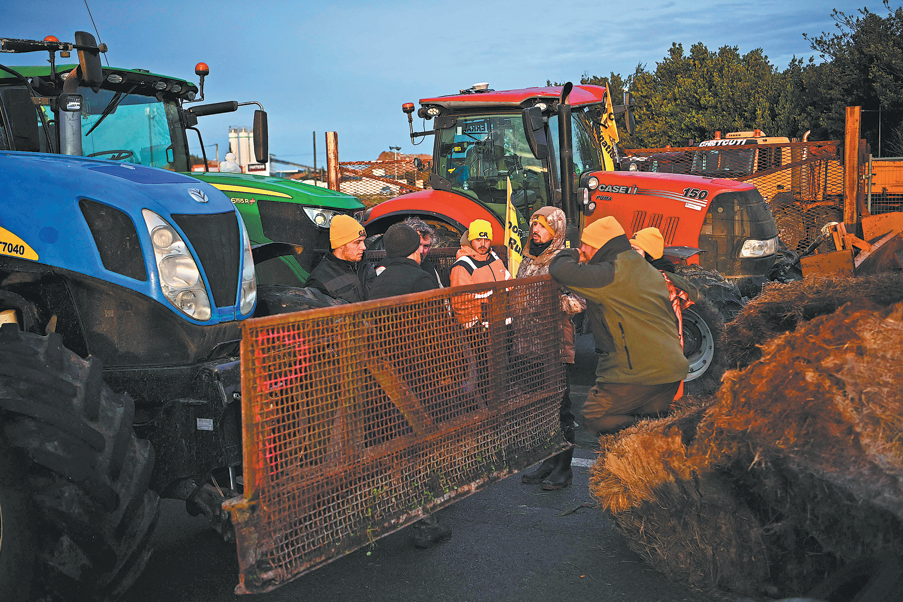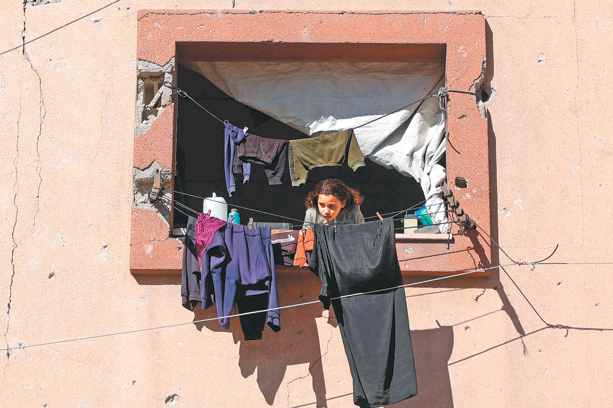Where poverty holds sway, fashion riches to fore


David Ochieng, popularly known as Avido in the fashion world, was born in Kibera slum in Nairobi.
The 2.5-square-kilometer slum has an estimated population of 250,000, making it the densest settlement in Kenya, according to United Nations Habitat.
He was raised by a single mother alongside two brothers and a sister, his family could not make ends meet and he dropped out of school when he was 11. While growing up in the slums, he said, he yearned to escape life on the street, and most of his childhood friends lost their lives through crime or drugs.
His journey into fashion was accidental. Having joined a dancing troupe to avoid delinquency, it was his task to ensure his team had the right costumes, and through working with those who made the costumes his interest in tailoring was roused.
"I started engaging in fashion around four years ago, and my motivation was not to become a renowned designer but to express myself and create opportunities for people around myself in the community.
"That's why I later engaged in activities like training deaf women and young mothers in the slum in tailoring so that they could earn a living.
"Initially I never had any interest in fashion. My dream as a young kid was to become an electrical engineer, but I could not make it due to educational challenges. Before getting into fashion I tried different things like rap music, poetry, soccer and dancing."
Being an artist at heart, he was drawn to the African fabric known in East Africa as kitenge, because he said the bold patterns and prints on the fabric reminded him of ancient African tattoos and skin markings. His unique style using the African fabric started turning heads and eventually caught the eye of the Jamaican reggae singer Don Carlos, who was visiting Kibera on the sidelines of a concert in Kenya in 2017.
Avido offered Don Carlos a shirt he had made from kitenge, which the musician donned during a performance in Kenya, giving Avido both national and international recognition. This led to the birth of his fashion house Lookslike Avido.
"Since Don Carlos performed while wearing my shirt, my phone has not stopped ringing," Avido said. "Many international artists started looking for me to make them costumes for their performances, and I have worked with the likes of Bruno Mars, the reggae singer Chronixx, the Coldplay frontman Chris Martin and Beyonce, who commissioned Avido and other African designers for her Black is King project."
Being a believer in what he calls "conscious fashion", Avido decided to use his new-found fame in fashion to help upcoming designers from Kibera slum while highlighting the issues facing the community at large.
"My intention is to invite people from all walks of life into the slum so they can see for themselves that Kibera people are not thugs and hopeless, as is often portrayed."
Others in the slum have also made a career in fashion, including Cresentiah Owuor, Millicent Ogola and Brillian Lutomia. Having studied and graduated in fashion and design at Passion to Share Foundation, an organization in Kibera, the three received an invitation from Avido to exhibit as a group at Kibera Fashion Week in October.
Though they are pursuing individual ambitions, the three showcased their designs at the fashion week under the name Simbi Nyaima. They decided to go by the name because it comes from a local legend about a woman who was treated with disdain by the village, but her wise counsel ended up saving them from calamity, Ogola said.
"As an upcoming designer, Kibera Fashion Week helped me to learn a lot because I came to know my strength and realized that I should not look down upon myself because whatever I was afraid to bring out is what people want to see," said Ogola who runs the fashion brand Emaryan Bespoke.
"I have also been able to meet different people, different designers... and it has helped me to tell people about my brand."
Showing inclusivity
Her colleague Owuor, who runs Style by Chris fashion house, said they use fashion to tell people their stories and about the pain they go through. They also use their designs to talk about social standards because many girls and young women from Kibera have been denied job opportunities because of where they come from.
"Most people think that people in Kibera slum are thieves, and we have been denied jobs because of that," Owuor said. "When we came up with our collection, the fabrics tell a lot about our stories. We can combine a sack with other fabric to make a dinner dress to show inclusivity because Kibera Fashion Week is all about inclusivity."
Lutomia, now in the process of setting up her Taraji Collection brand, said that unlike well-known fashion events such as New York Fashion Week and London Fashion Week, the Kibera one is open to all. It serves as a platform for helping people especially from Kibera tell their stories.
"Kibera Fashion Week gave young talented people an opportunity that normally takes years to achieve," she said. "The fact that it happened in Kibera within the ghetto was so helpful for our people. I was happy to be a part of it because being a woman in Kibera is not that easy, especially if you do not have education or any skill."
The fashion event in Kibera in October attracted more than 7,000 people, including foreign visitors and local and international artists, Avido said. Since remuneration is a major challenge for local fashion designers, especially those from underprivileged areas such as Kibera, Avido said he sought sponsors to ensure that each designer pocketed $1,000 and that each model pocketed up to $500.

































